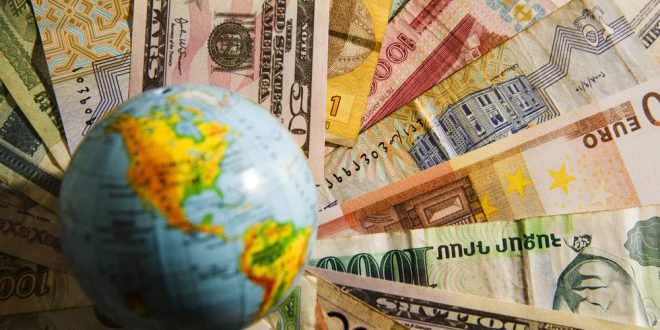On Friday, the dollar rose versus the euro and the Japanese yen after the August jobs report revealed a still-strong labour market, despite some signs of slippage.
Employers added 187,000 jobs in August, exceeding predictions of 170,000. However, data for July was revised downward to reflect 157,000 employment gains rather than the originally reported 187,000.
The unemployment rate increased to 3.8%, exceeding the projected 3.5%. Average hourly earnings increased by 4.3% year on year, falling short of forecasts for a 4.4% increase.
The dollar index yesterday rose 0.58% to 104.23. It is up 0.08% for the week, recouping price declines caused by weaker economic indicators earlier in the week.
The euro declined 0.59% to $1.0779, falling 0.13% against the US dollar this week.
The dollar gained 0.42% to 146.145 Japanese yen after sliding to 144.44, its lowest level since August 11. After falling from a 10-month high of 147.375 on Tuesday, it is down 0.12% on the week.
According to the CME Group’s FedWatch Tool, Fed funds futures traders now expect the Fed to leave rates steady at its September meeting and see only a 36% chance of a rate hike in November.
Some unusual circumstances influenced Friday’s jobs report. Last month, a strike by Hollywood actors resulted in the loss of 17,000 jobs in the motion picture and sound recording businesses. The bankruptcy of trucking company Yellow in early August resulted in the loss of 37,000 jobs in the truck transportation industry.
Payrolls would have climbed by around 241,000 in August if not for these one-time factors.
Other statistics released on Friday revealed that US manufacturing dropped for the tenth consecutive month in August, but the rate of loss slowed, implying that the sector may be stabilising at lower levels.
Elsewhere, Boris Vujcic, a policymaker at the European Central Bank, stated on Friday that weaker economic growth could cause eurozone inflation to fall faster, but a healthy labour market continues to provide rapid wage growth, generating upside risk for prices.
ECB policymaker Francois Villeroy de Galhau also stated that the ECB has a number of choices at its upcoming interest rate meeting, despite the fact that interest rates are near their peak and underlying inflation appears to have peaked.
Oil
Oil prices rose on Friday to their highest levels in more than seven months, ending a two-week losing streak, supported by expectations of supply shortages.
Saudi Arabia is widely expected to extend a voluntary oil production cut of 1 million barrels per day until October, prolonging supply restrictions announced by the Organization of the Petroleum Exporting Countries (OPEC) and its allies in the bloc known as OPEC+ to support prices.
Russian Deputy Prime Minister Alexander Novak said on Thursday that his country, the world’s second-largest oil exporter, has already agreed with its OPEC+ partners to reduce oil exports next month.
The price of Brent crude rose $1.66, or 1.9 percent, to $88.49 per barrel at settlement. It rose during the session to $88.75 per barrel, the highest level since January 27.
US West Texas Intermediate crude rose $1.39, or about 1.7 percent, to $85.02 per barrel. It earlier rose to $85.81, its highest level since November 16.
The price of Brent crude rose by about 4.8 percent this week, recording the largest weekly increase since late July. The price of US West Texas Intermediate crude also rose 7.2 percent, its largest weekly gain since March.
Gold
Gold prices approached a one-month high on Friday before settling to end the week up just over 1% following a mixed U.S. jobs report for August, in which payrolls were more than expected but unemployment increased to 18-month highs.
According to the Labour Department, the US economy added 187,000 nonfarm payrolls last month, up from 170,000 expected, while the unemployment rate rose to 3.8% from 3.5% previously. The mixed report sent the message that the Federal Reserve may not immediately resort to additional rate hikes to push inflation to its long-standing target of 2% per year, up from the current level of around 3%.
The Fed has three more chances to raise interest rates this year, with rate decisions set by its policy-making Federal Open Market Committee on September 20, November 1, and December 13.
With employment continuing to expand faster than projected each month, the Fed may decide for one or two more rate hikes this year.
However, any increase in unemployment, as seen in August, will complicate the Fed’s decision-making process. Aside from managing inflation at or below 2%, the US Congress has ordered the central bank to offer maximum employment to Americans, which is defined as a jobless rate of 4% or lower. The unemployment rate of 3.8% last month was the highest since February 2021.
Euro
The euro surged against the dollar on Friday, while eurozone bond yields fell, after statistics indicated a significant increase in the US unemployment rate in August, bolstering the assumption that the Federal Reserve may be done raising interest rates.
According to Labour Department data, the unemployment rate in the United States increased more than predicted in August, rising to 3.8% from 3.5%, its highest level since February 2022.
Last month, 187,000 jobs were added, above estimates for a 170,000 increase. July’s total was reduced from 187,000 to 157,000.
The euro rose versus a weaker dollar, closing up 0.2% at $1.0866.
Government bond yields in the eurozone fell, with the German 10-year yield falling to its lowest level since August 9 at 2.446%. It was most recently flat at 2.47%.
The STOXX 600 rose after the report, but only by 0.2%, remaining within the day’s range. An index of eurozone banks declined slightly, closing down 0.14% at the session low.
 Noor Trends News, Technical Analysis, Educational Tools and Recommendations
Noor Trends News, Technical Analysis, Educational Tools and Recommendations





